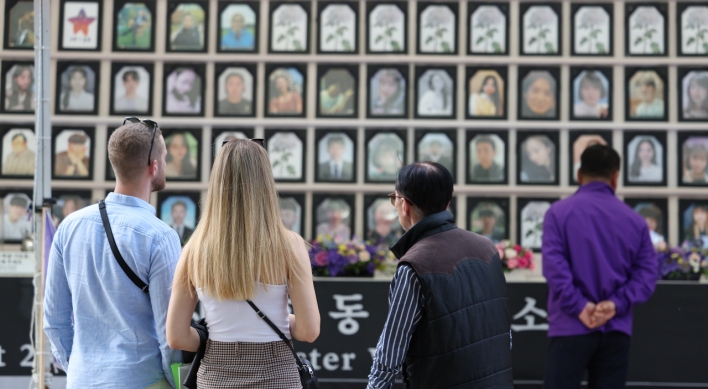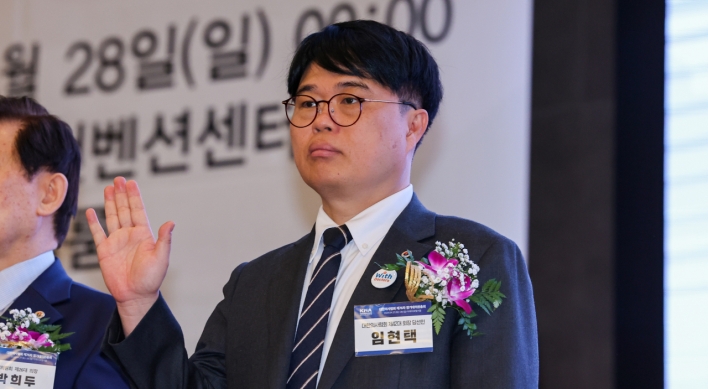Technology transfer is one of the most sought-after forms of assistance for developing countries, but ASEIC thinks technology should be tailored for local needs to become more effective.
ASEIC, which was established in 2011 with a mission of promoting eco-innovation at small and medium enterprises in Asia and Europe, adopts the concept of “appropriate technology” for its inclusive program. The program aims to provide technological aid to developing Asian countries, which will help raise their understanding of eco-innovation and develop solutions for sustainable growth.
“Appropriate technology” is generally defined as technology which is tailored for local needs. ASEIC introduces efficient, cleaner, more affordable appropriate technologies suitable for the needs of local people in less developed Asian countries. In addition, it works together with the local people from planning to implementation stage to encourage active participation, thus creating local business opportunities.
Background of Cambodia case
The target country for the first ASEIC inclusive program was Cambodia. The Cambodia project, launched in 2011, helped introduce solar power-based rice cooking technology.
According to World Bank data in 2009, only 6 percent of Cambodia’s rural population has access to the main electricity grid. Most of the electricity is from village grids often powered by inefficient diesel generators.
People at the bottom of the economic pyramid rely heavily on firewood for cooking and kerosene for lighting, which poses serious environmental and health-related problems. In addition, most of the agricultural produce of Cambodia, mainly rice, is cheaply exported to Thailand and Vietnam without being properly dried. Some regions have started to use expensive imported electrical produce dryers but this has largely proven to be unprofitable due to the high cost of electricity.
This project seeks to address these problems through the adoption and demonstration of so-called “appropriate technologies” for rice cooking, which are non-high-tech solutions specifically tailored to the actual needs of local people in Cambodia.
With these guidelines in mind, during 2011 and 2012, 120 solar cookers were locally manufactured, 60 solar home systems were constructed and grain-drying facilities were demonstrated in selected provinces.
All of these initiatives were specially designed to suit the local conditions of the rural community in Cambodia. The project aims to create untapped local business opportunities by commercializing the technologies while reducing health and environmental risks for local residents.
The target customers for the SHS and solar cookers are rural low-income families, which constitute 79 percent of Cambodian households.
Success factors
Since the process of encouraging households to adopt new technology into daily life requires enormous effort, the project emphasizes a bottom-up approach by using the locally based Institute of Sustainable Agriculture and Community Development, or ISAC, to build a strong bond with the local community.
This strategy underscores the importance of gaining a deeper understanding of the culture and the local environment to build trust, which is crucial for the success of the project.
To foster sustainability and ongoing capacity-building for ISAC’s local staff, ASEIC and its partners developed the Takeo Appropriate Technology Center. The main objective of the center is to encourage young entrepreneurs to set up small social enterprises that contribute to the well-being of people in the region.
Solar cookers are a completely new technology in Cambodia, and ISAC has great potential for marketing their “made in Cambodia” solar cookers to households, NGOs and the government.
This project attempts to integrate a bottom-up approach with a top-down method, since it not only improves capacity building but also encourages local untapped business opportunities.
By Seo Jee-yeon (jyseo@heraldcorp.com)
ASEIC, which was established in 2011 with a mission of promoting eco-innovation at small and medium enterprises in Asia and Europe, adopts the concept of “appropriate technology” for its inclusive program. The program aims to provide technological aid to developing Asian countries, which will help raise their understanding of eco-innovation and develop solutions for sustainable growth.
“Appropriate technology” is generally defined as technology which is tailored for local needs. ASEIC introduces efficient, cleaner, more affordable appropriate technologies suitable for the needs of local people in less developed Asian countries. In addition, it works together with the local people from planning to implementation stage to encourage active participation, thus creating local business opportunities.
Background of Cambodia case
The target country for the first ASEIC inclusive program was Cambodia. The Cambodia project, launched in 2011, helped introduce solar power-based rice cooking technology.
According to World Bank data in 2009, only 6 percent of Cambodia’s rural population has access to the main electricity grid. Most of the electricity is from village grids often powered by inefficient diesel generators.
People at the bottom of the economic pyramid rely heavily on firewood for cooking and kerosene for lighting, which poses serious environmental and health-related problems. In addition, most of the agricultural produce of Cambodia, mainly rice, is cheaply exported to Thailand and Vietnam without being properly dried. Some regions have started to use expensive imported electrical produce dryers but this has largely proven to be unprofitable due to the high cost of electricity.
This project seeks to address these problems through the adoption and demonstration of so-called “appropriate technologies” for rice cooking, which are non-high-tech solutions specifically tailored to the actual needs of local people in Cambodia.
With these guidelines in mind, during 2011 and 2012, 120 solar cookers were locally manufactured, 60 solar home systems were constructed and grain-drying facilities were demonstrated in selected provinces.
All of these initiatives were specially designed to suit the local conditions of the rural community in Cambodia. The project aims to create untapped local business opportunities by commercializing the technologies while reducing health and environmental risks for local residents.
The target customers for the SHS and solar cookers are rural low-income families, which constitute 79 percent of Cambodian households.
Success factors
Since the process of encouraging households to adopt new technology into daily life requires enormous effort, the project emphasizes a bottom-up approach by using the locally based Institute of Sustainable Agriculture and Community Development, or ISAC, to build a strong bond with the local community.
This strategy underscores the importance of gaining a deeper understanding of the culture and the local environment to build trust, which is crucial for the success of the project.
To foster sustainability and ongoing capacity-building for ISAC’s local staff, ASEIC and its partners developed the Takeo Appropriate Technology Center. The main objective of the center is to encourage young entrepreneurs to set up small social enterprises that contribute to the well-being of people in the region.
Solar cookers are a completely new technology in Cambodia, and ISAC has great potential for marketing their “made in Cambodia” solar cookers to households, NGOs and the government.
This project attempts to integrate a bottom-up approach with a top-down method, since it not only improves capacity building but also encourages local untapped business opportunities.
By Seo Jee-yeon (jyseo@heraldcorp.com)
-
Articles by Korea Herald





![[Music in drama] Rekindle a love that slipped through your fingers](http://res.heraldm.com/phpwas/restmb_idxmake.php?idx=644&simg=/content/image/2024/05/01/20240501050484_0.jpg&u=20240501151646)


![[New faces of Assembly] Architect behind ‘audacious initiative’ believes in denuclearized North Korea](http://res.heraldm.com/phpwas/restmb_idxmake.php?idx=644&simg=/content/image/2024/05/01/20240501050627_0.jpg&u=20240502093000)


![[KH Explains] Will alternative trading platform shake up Korean stock market?](http://res.heraldm.com/phpwas/restmb_idxmake.php?idx=644&simg=/content/image/2024/05/01/20240501050557_0.jpg&u=20240501161906)







